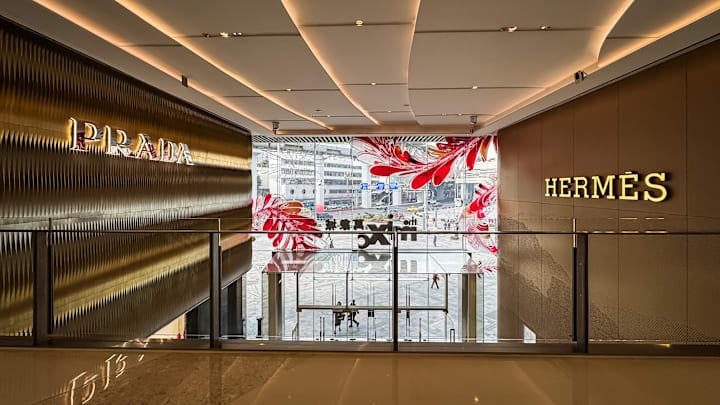Utopia
In 2018, the creator of Utopia, Cho, made his brand around the ideology that he wanted to create his best life and live it to the fullest. His work displays this belief through intentional craftsmanship and his unique ability to flip materials into beautiful fashion pieces. He picked up some attention on the internet for flipping designer dust bags while showcasing the logo. Fast forward to today, some of his products are created through this fashion-forward method, but he also has many non-branded pieces, which also use upcycled material.
His most recent flips include transforming the Nike AF1 and making it into a bag. He shares some of his processes on his Instagram and the final product. Most of the bags take on unique shapes based on the shoe used, and the final product typically gives the feeling of a saddlebag/shoulder bag. On his website, he also shows a few of his collaborations, including JUST water. Essentially, Cho made a vest, hat, tote bag, and sandals from water bottles, and the final products looked fun and stylish. This collaboration stood out because it highlights Cho’s consciousness with products and aesthetics.
Some statistics
According to a study published by IBM in 2022, 51% of consumers said that shopping sustainably has become more important. Another 77% said this exceeds fashion, and they are trying to make more impactful choices at home. These statistics show that there is a desire to honor conscious decisions and demonstrate consumers using their power. In another WGSN article, they question how nature can get a respectable seat in industries that require profitability. Bringing it back to the beginning, the elitism in fashion is beginning to soften its hierarchy.
This understanding is essential because it’s a start in honoring the smaller creatives, culture, and inspiration that fashion is built on. There is a shift between the consumer and the business where people either have the flexibility to create what they are missing or become selective in supporting brands. As much as a luxury fashion brand can be suggestive, being able to play with that tone and finding your identity around it is fashionable. So, how do you define fashion?
